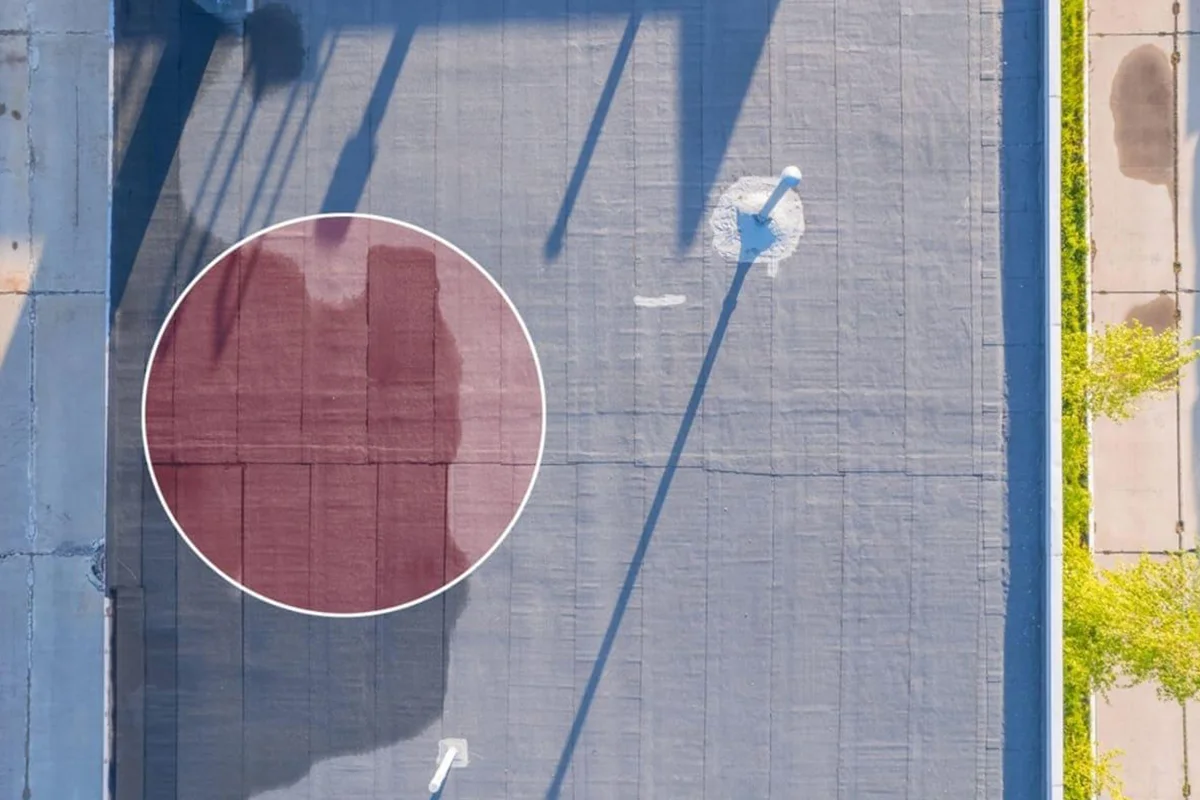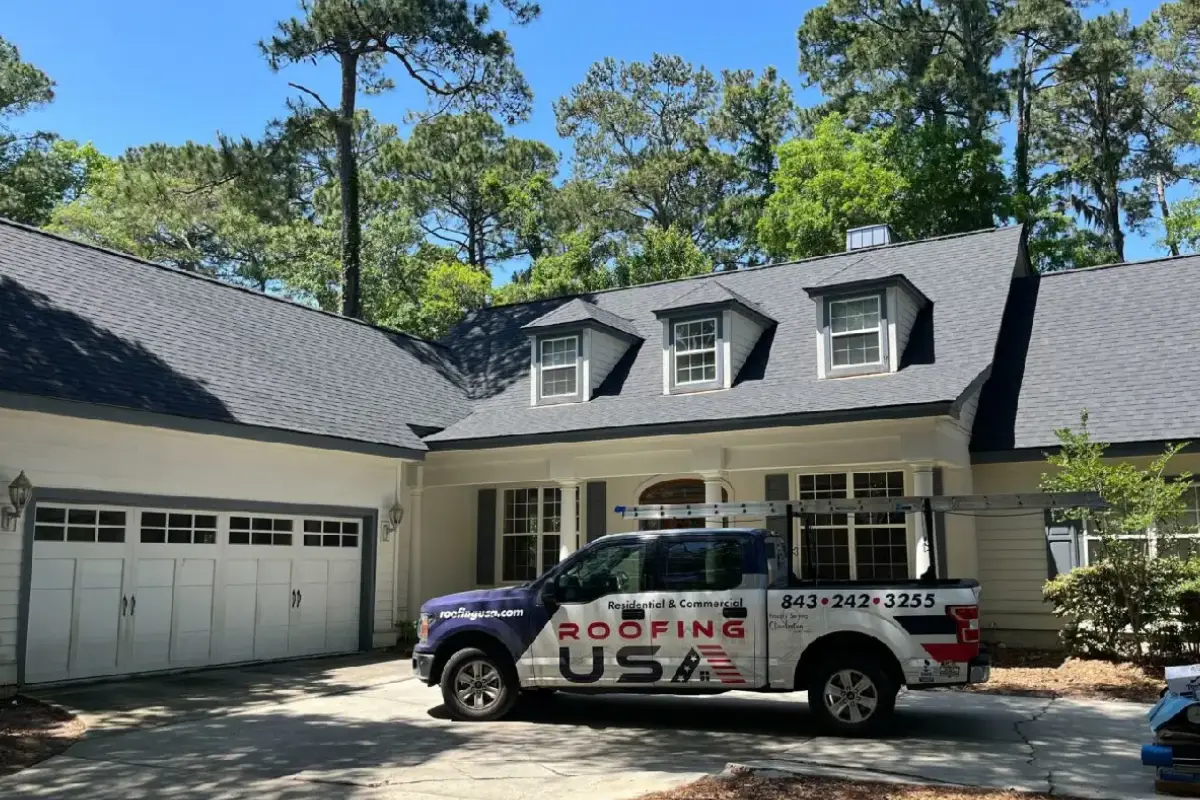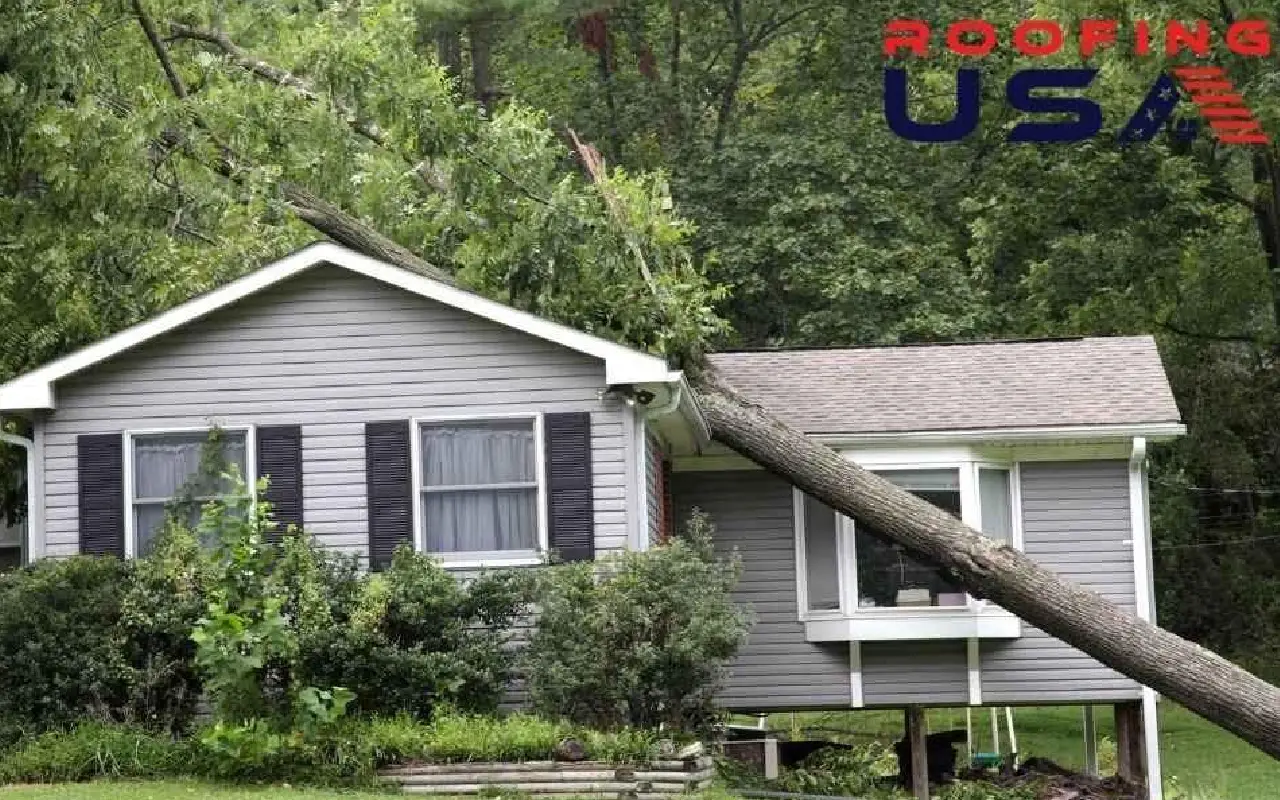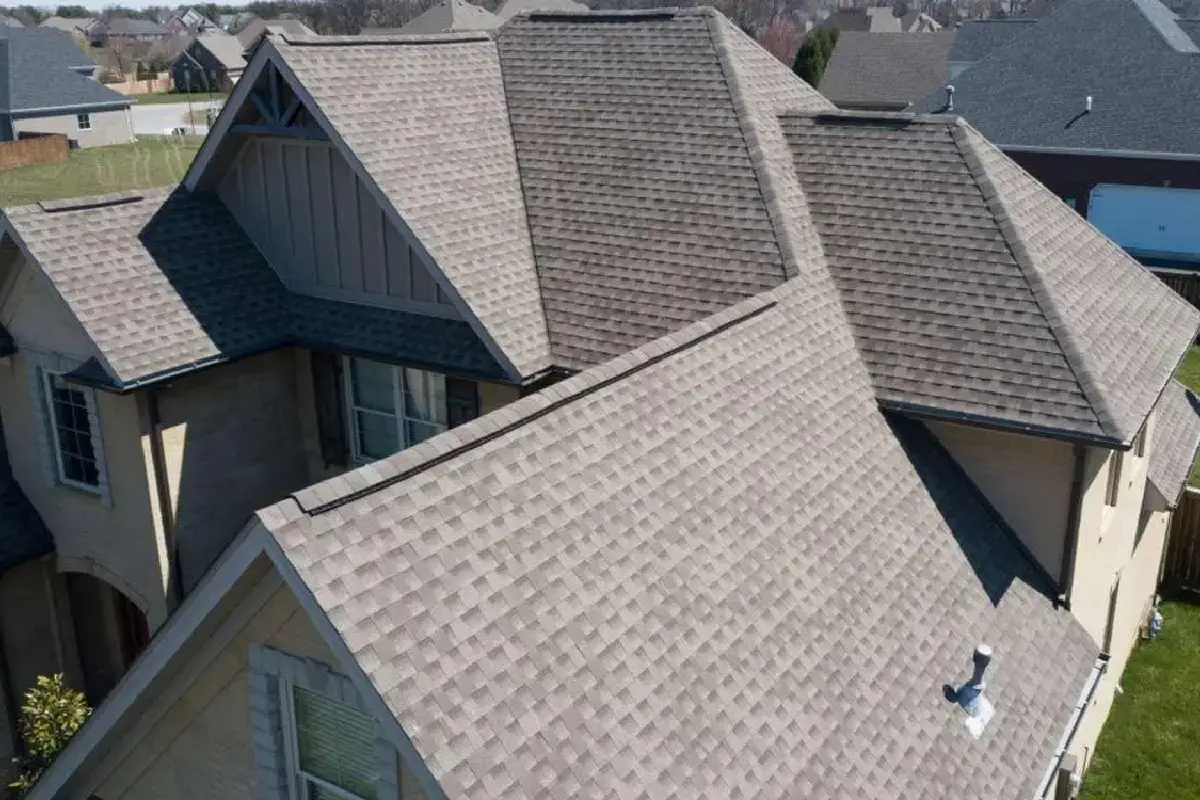As a business owner, you take pride in your establishment’s appearance. Among the essential components of your business is your commercial roof. However, natural disasters, particularly storms, can turn your pride and joy into a disaster zone. These adverse weather conditions can impact commercial roofs in various ways, from accumulated snow to extreme winds.In this post, our team at Roofing USA will cover several aspects of storm damage. We will explore the damages business owners may face, ways to identify roof damage, and measures to take to minimize the impacts of these natural disasters.Read on to learn about the types of storms that impact commercial roofs and how they can leave scars on your commercial property.
Spotting the Signs of Hail Damage on Commercial Roofs
Hail damage is particularly tricky to identify, as it requires a keen eye to spot the granules that break off the roofing material. These tiny granules can easily go unnoticed by a business owner, but the consequences can be significant. When hail damages a roof, it compromises the waterproofing capabilities, creating a potential pathway for water infiltration down the line. It’s important to be vigilant and look out for any signs of roof damage, such as dents or cracks that appear to be caused by hail. Additionally, business owners can also hire aprofessional roofing contractor to conduct thorough inspections and identify any potential hail damage that may have occurred.
Water damage is not only one of the most common types of storm damage, but it can also wreak havoc on your property. Whether it’s caused by heavy rain, a burst pipe, or a leaky roof, water intrusion can have far-reaching consequences. It’s crucial to keep an eye on any signs of water seepage, as it can lead to a host of issues, including the growth of harmful mold, rotting of materials, and even structural damage. Moreover, when water accumulates on the roof, it exerts additional weight, which can put undue pressure on the roof structure. Over time, this excess weight can cause the roof to buckle and eventually result in leaks. Taking proactive measures to prevent and mitigate water damage is important, as it can save you from costly repairs and the inconvenience of dealing with extensive property damage. Regular inspections, maintenance of gutters and downspouts, and prompt repairs to any signs of water intrusion are all crucial steps in safeguarding your property against the damaging effects of water.
How Falling Objects Can Compromise a Roof’s Integrity
During storms, commercial roofs face a specific risk from various types of debris, including tree branches, signs, building materials, or even fragments from nearby structures. These objects, propelled by strong winds, can pose a severe threat as they have the potential to puncture, gouge, or tear through roofing materials, leading to costly roof damage. To safeguard the integrity of the building and prevent such consequences, it is important to promptly remove any potential debris from the vicinity of the commercial property. By doing so, you not only ensure the protection and longevity of the roof but also contribute to preserving the overall structural integrity of the entire building. You are also providing a safe and secure environment for occupants and minimizing the risk of further complications that may arise from neglecting this roof maintenance task.
Flat Roofs vs. Sloped Roofs: Which Faces More Storm Damage?
Both flat and sloped roofs have their issues when it comes to storm damage. It is important to be aware of these issues and take necessary precautions to protect your property during severe weather conditions.
Flat Roofs
Flat roofs, with their horizontal surface, are more susceptible to water damage, particularly when adequate drainage systems are lacking. This increased vulnerability can result in problems such as leaks, mold growth, and gradual deterioration of the roofing materials over time. It is important to address these issues promptly to safeguard the structural integrity and longevity of the building. Additionally, the absence of proper drainage can lead to the accumulation of stagnant water, which may further exacerbate the potential for roof damage and create additional issues, such as the proliferation of pests and the degradation of the roof’s insulation properties. Therefore, regular roof maintenance and proactive measures to ensure effective water drainage are vital for the long-term durability and performance of flat roofs.
Sloped Roofs
On the other hand, sloped roofs, although generally more resistant to water damage, can experience structural issues during storms, particularly if large trees overhang them. The weight of falling branches or debris can cause structural damage, compromising the integrity of the roof. Additionally, the pitch of sloped roofs can affect their wind resistance. Steeper slopes are less likely to be affected by strong winds, whereas flatter slopes may be more susceptible to wind uplift and damage. It is important to consider these factors when determining the type of commercial roof to install in Charleston, as they can significantly impact the kind of roof damage that storms can cause.
What Should You Do if You Spot Storm Damage
Here are the steps to take after identifying storm damage to your commercial roof:
- Document the damage: Take photographs and make detailed notes of what you see. This documentation will be useful for insurance purposes and when communicating with a commercial roof repairs professional.
- Contact reputable roofing companies: Reach out to a trusted roofing company to schedule a thorough inspection. They will provide a detailed assessment, identify any hidden damage, and recommend repair or replacement options.
- Avoid climbing on the roof: For safety reasons, it is not advisable to climb on the roof yourself. Leave the inspection to the professionals who have the necessary training and equipment.
- Contact your insurance company: Get in touch with your insurance company to discuss filing roofing insurance claims for storm damage. Provide them with all the necessary documentation, including the photographs and notes you took, to facilitate the claims process.
- Plan for repair or replacement: Once the inspection and insurance claim process is underway, start planning for the repair or replacement of your roof. Consider how the temporary disruption to your business operations can be managed.
Taking timely action after identifying storm damage can help mitigate further roof damage, minimize costs, and extend the lifespan of your roof.
The True Cost of Neglecting A Commercial Roof
Storm damage, whether caused by severe weather conditions or other factors, can have several significant consequences for your commercial property.
Economic Implications
Storm damage can have significant financial implications for your business. Not only do you have to consider the cost of repairs and restoration, but also the potential loss of revenue during the downtime. Additionally, if the initial roof damage is left unattended, it can worsen over time, leading to even more extensive repairs and higher costs. It is crucial to address storm damage promptly and proactively to mitigate the potential financial impact on your business.
Increased Repair Needs
If storm damage is not promptly addressed, it can lead to more extensive repairs. This can include significant structural roof damage, such as weakened foundations or compromised roofing, which may require costly reconstruction. Additionally, water infiltration resulting from the damage can lead to mold growth and further deterioration of the affected areas. These issues not only demand additional resources and time to fix but can also pose potential health hazards if left unattended. Therefore, it is crucial to address storm damage promptly to minimize the long-term consequences and ensure the safety and integrity of the property.
Safety Hazards
Unrepaired storm damage can pose significant safety risks to the occupants and visitors of your property. For instance, a damaged roof, weakened by the force of the storm, may be at an increased risk of collapsing and causing severe injuries due to falling debris. This can not only endanger the well-being of individuals but also lead to costly property damage. Therefore, it is crucial to address storm damage promptly and ensure the safety of everyone on your premises.
Insurance Premium Increase
When you make use of your insurance coverage for storm damage, it’s important to consider that it may increase your insurance premium. This increase can have significant long-term financial implications for your business, potentially affecting your overall budget and financial planning. It’s crucial to carefully weigh the potential costs and benefits before deciding on your insurance coverage for storm damage.
How to Mitigate This With Regular Maintenance
Regular roof maintenance of your commercial roof is the most effective way to mitigate the impacts of storm damage. Here are some key maintenance steps to consider:
- Routine Inspections: Regularly scheduled roof inspections can help identify potential weak points and damage early before they escalate into more significant problems. It allows for timely repairs that can prevent costly replacements down the line.
- Clear Drainage Systems: Keeping gutters and downspouts clear of debris ensures that water drains effectively, reducing the chances of pooling and subsequent water damage.
- Remove Potential Debris: Regularly check the surroundings of your property and remove any potential debris, such as loose branches or materials, that could be picked up by strong winds and cause damage.
- Seal Vulnerable Areas: Regularly check and seal areas that are vulnerable to water seepage, such as joints, flashings, and penetrations. This can prevent leaks and subsequent water damage.
- Invest in Durable Materials: Consider using durable and high-qualityroofing materials that can withstand harsh weather conditions, providing better protection against storm damage.
By taking these steps, you can significantly reduce the chances of storm damage and extend the lifespan of your commercial roof, thereby safeguarding your investment and minimizing potential business disruptions.
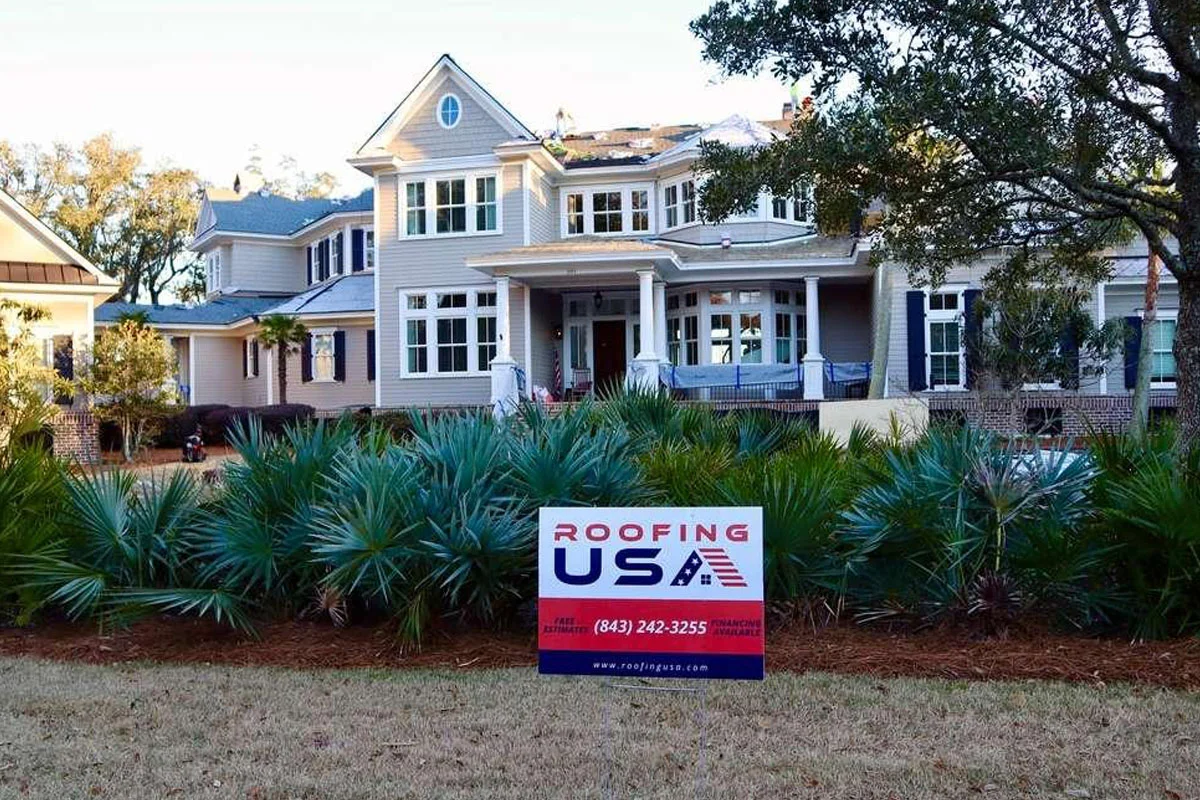
Handle Storm Damage for Your Commercial Roof With the Best Roofing Company Charleston, SC Offers
Storms can cause significant damage to commercial roofs, leading to longer-term problems if left unaddressed. With this in mind, businesses must take a proactive approach to minimize the risks of damage. Business owners can safeguard their property by monitoring their roofs’ condition, keeping the surrounding area free of debris, and making sure to address any damage promptly. At Roofing USA, we understand the havoc that storm damage can wreak on your commercial properties. We provide comprehensive Charleston roofing solutions tailored to your specific needs. Our team of experienced professionals is equipped with the skills and knowledge to perform thorough inspections, identify potential issues early, and carry out effective repairs or replacements as needed. Our commitment to excellence and superior customer service makes us the ideal choice for all your Charleston roofing needs. Contact us today to handle any of your roofing needs or to learn more about our services!


